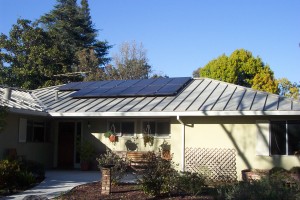In Implications for the Power Sector of Recent Rulings by U.S. Supreme Court and FERC, Pillsbury attorney Michael Hindus, discusses an important issue the power industry is currently facing — the tension federal and state roles in power supply planning. Of note, is the U.S. Supreme Court’s April 19 decision in Hughes v. Talen Energy Marketing LLC et al. wherein the Court struck down on federal pre-emption grounds a Maryland program intended to support construction of a new 725 MW natural gas-fired generating plant in Maryland after concluding that the program invaded “FERC’s [exclusive] regulatory turf” over determination of wholesale rates for electricity. This was followed within days by FERC blocking the implementation of two Purchase Power Agreements approved by the Ohio Public Utilities Commission just days later. The tension likely will continue, and the sparring over this issue could intensify, given the states’ efforts to support continued operation of existing generating units and construction of new plants.
Articles Posted in Renewables
Attention Home Improvement Contractors: CA Bill Singles Out Solar Contractors
California Assembly Bill 2699 (Gonzalez) is a bill to watch if you are a home improvement contractor that  installs solar energy systems or, for that matter, a contractor in California. AB 2699 would, among other things, require the Contractors State License Board (CSLB) to develop a “solar energy system disclosure document” and, in turn, require solar energy systems companies to provide this document to its customers prior to the completion of a sale, financing, or lease of a solar energy system.
installs solar energy systems or, for that matter, a contractor in California. AB 2699 would, among other things, require the Contractors State License Board (CSLB) to develop a “solar energy system disclosure document” and, in turn, require solar energy systems companies to provide this document to its customers prior to the completion of a sale, financing, or lease of a solar energy system.
AB 2699 would also require the CSLB to establish through regulation requirements for a contractor to maintain a blanket performance and payment bond for the purpose of solar installation work and, of particular note, even with this bond, the contractor will be subject to the down-payment restriction set forth in California Business & Professions Code § 7159.5(a)(8). If this bill is signed into law, this latter requirement will certainly translate into increased costs for contractors that currently do not have in place a blanket performance and payment bond. In turn, as a practical matter, this lIsley will translate into higher costs for consumers who want to install a solar system because such costs will trickle down to them. There may also be pressure put on others in the industry to reduce costs to make up for this increase in costs.
Renewable Energy Facilities Federal Income Tax Credits Extended
In Five Things You Need to Know About the Extension of the ITC/PTC, Pillsbury  partner Tom Morton discusses the 2016 Consolidated Appropriations Act (H.R. 2822) and the extension of federal income tax credits for solar, wind and certain other renewable energy facilities.
partner Tom Morton discusses the 2016 Consolidated Appropriations Act (H.R. 2822) and the extension of federal income tax credits for solar, wind and certain other renewable energy facilities.
Photo: Chris Potter, 3D Green Footprint, Taken December 7, 2012 – Creative Commons
Renewable Energy Contractors Take Note – Senate Bill 350 is Law
Get ready wind, solar, biomass, and geothermal energy and transportation electrification contractors! On October 7, 2015, California Governor Jerry Brown signed into law the “Clean Energy and Pollution Reduction Act of 2015.” The objectives of the Act are: (1) to increase from 33% to 50% (by December 31, 2030), the procurement of our electricity from renewable sources; and (2) to double the energy efficiency savings in electricity and natural gas final end uses of retail customers through energy efficiency and conservation. These lofty goals are to be achieved by implementation of the California Renewables Portfolio Standard (RPS) Program, a program established in 2003. Notably, the Act includes a legislative finding that “a principal goal of electric and natural gas utilities’ resource planning and investment shall be… to encourage the diversity of energy sources through improvements in energy efficiency, development of renewable energy resources, such as wind, solar, biomass, and geothermal energy, and widespread transportation electrification.” This bill reflects California’s persistence in its efforts to turn to reliance on renewable energy. In effect, this should mean the continued growth in opportunities for contractors working in renewable energy areas.
Count Down to Solar Decathlon U.S. 2015
UPDATE: Stevens Wins Solar Decathlon 2015 — CONGRATULATIONS!
The U.S. Department of Energy’s Solar Decathlon is a biennial event that challenges collegiate teams to design, build, and operate solar-powered houses that are cost-effective, energy-efficient, and attractive. The winning team will be the one that best blends affordability, consumer appeal, and design excellence with optimal energy production and maximum efficiency. The Solar Decathlon U.S. 2015 will take place October 8 through 18 at the Orange County Great Park in Irvine, California.
NV Shining Bright Light on Solar Contractors
The Nevada State Contractors Board (NSCB) appears to be continuing its efforts to ensure that solar companies remain in compliance with state regulations. NSCB reports that it is using a series of outreach presentations to contractors and homeowners interested in solar construction, reporting, in part, on licensing-related violations within the industry. NSCB continues to caution that only companies with Nevada contractor’s licenses are allowed to install solar equipment in Nevada. It reports that out-of-state contractors “have been known to hire unlicensed sales representatives [to] solicit solar projects, who then contract for the work to be installed. This follows NSCB’s report in its February 2015 Senior Bulletin “aggressive efforts from out-of-state manufacturers to sell and install their products in Nevada homes is becoming more and more rampant.” It cautions Nevada licensed-contractors not to jeopardize their licenses by contracting with unlicensed contractors.
Additional Source: Nevada State Contractors Board, Horizons (August 2015), Board Addresses Solar Concerns; Nevada State Contractors Board, Horizons (February 2015), Beware of unlawful practices in solar sales
$7.4 M Boost to Marine and Hydrokinetic Systems Development
Recently the Department of Energy announced that Re Vission Consulting, LLC (Sacramento, CA), Virginia Tech (Blacksburg, Virginia), Dehlsen Associates, LLC (Santa Barbara, CA), and Pennsylvania State University (State College, PA) were selected to receive $7.4 M “to spur innovation of next-generation water power component technologies, designed for manufacturability and built specifically for marine and hydrokinetic (MHK) systems.” The projects will address technical challenges in 3 areas: (1) advanced controls, (2) crosscutting power take-off (PTO)—which converts mechanical motion into electrical power, and (3) innovative structures. Advancements in MHK technologies are expected to help effectively and sustainably harness increased amounts of renewable energy from waves, tides, and ocean currents, improving performance and reducing the cost of MHK technologies.
10th Cir. Rejects Constitutional Challenge to Colorado’s Renewable Energy Mandate
In a ruling issued July 13, 2015, the U.S. Court of Appeals for the Tenth Circuit affirmed the decision of the lower court dismissing the claim of the Energy and Environment Legal Institute (EELI) that Colorado’s renewable energy mandate, as approved by Colorado voters, violates the “dormant commerce clause” of the U.S. Constitution. The case is Energy and Environment Legal Institute, et al., v. Epel, Tarpey, Patton, Commissioners of the Colorado Public Utilities Commission.
8th Cir. Rejects Appeal of EPA’s Denial of Small Refinery’s Petition for Extension of Exception Under RFS
On July 8, 2015, the Eighth Circuit Court of Appeals rejected petitioner Lion Oil Company’s appeal of EPA’s denial of this small El Dorado, Arkansas’ refinery’s petition that its exception from the Renewable Fuel Standard program be extended for another year (through 2013), citing disruption to a key supply pipeline and noting its “financial position has not improved.” Lion Oil Company previously received exemptions through 2012. The case is Lion Oil Company v. EPA.
By law, “small” refineries (those that process 75,000 or less of crude oil on a daily basis) were excepted from the RFS obligations for two years (until 2011), and this exception could be extended for additional periods if the refinery could demonstrate a “disproportionate economic hardship”. See, generally, 42 U.S.C. § 7545. EPA must coordinate its review of such petitions with the Department of Energy (DOE), which was directed to conduct a study to determine whether Lion Oil Company would face such hardships.
DC Cir. Dismisses Challenge to EPA “Solid Waste” Determination for Lack of Standing
On June 2, the U.S. Court of Appeals for the District of Columbia Circuit decided the case of Carbon Sequestration Council and Southern Company Services, Inc., v. EPA on standing grounds. In 2010, EPA promulgated a rule establishing a new category of Safe Drinking Water Act injection wells, known as “Class VI” wells, to respond to the need to sequester large amounts of carbon dioxide necessitated by EPA’s new carbon capture and storage program. In connection with this rulemaking, EPA also determined that “supercritical carbon dioxide streams” managed in Class VI wells were “solid waste” within the meaning of the Resource Conservation and Recovery Act (RCRA). Believing that EPA’s action was inconsistent with RCRA and a number of DC Circuit precedents, this determination was challenged. However, the Court of Appeals held that none of the petitioners had standing to litigate this issue. Under circuit precedent, the Court of Appeals ruled that they could not show that they suffered any injuries attributable to this new rule although they were otherwise deeply engaged in the carbon capture and storage program.
 Gravel2Gavel Construction & Real Estate Law Blog
Gravel2Gavel Construction & Real Estate Law Blog


